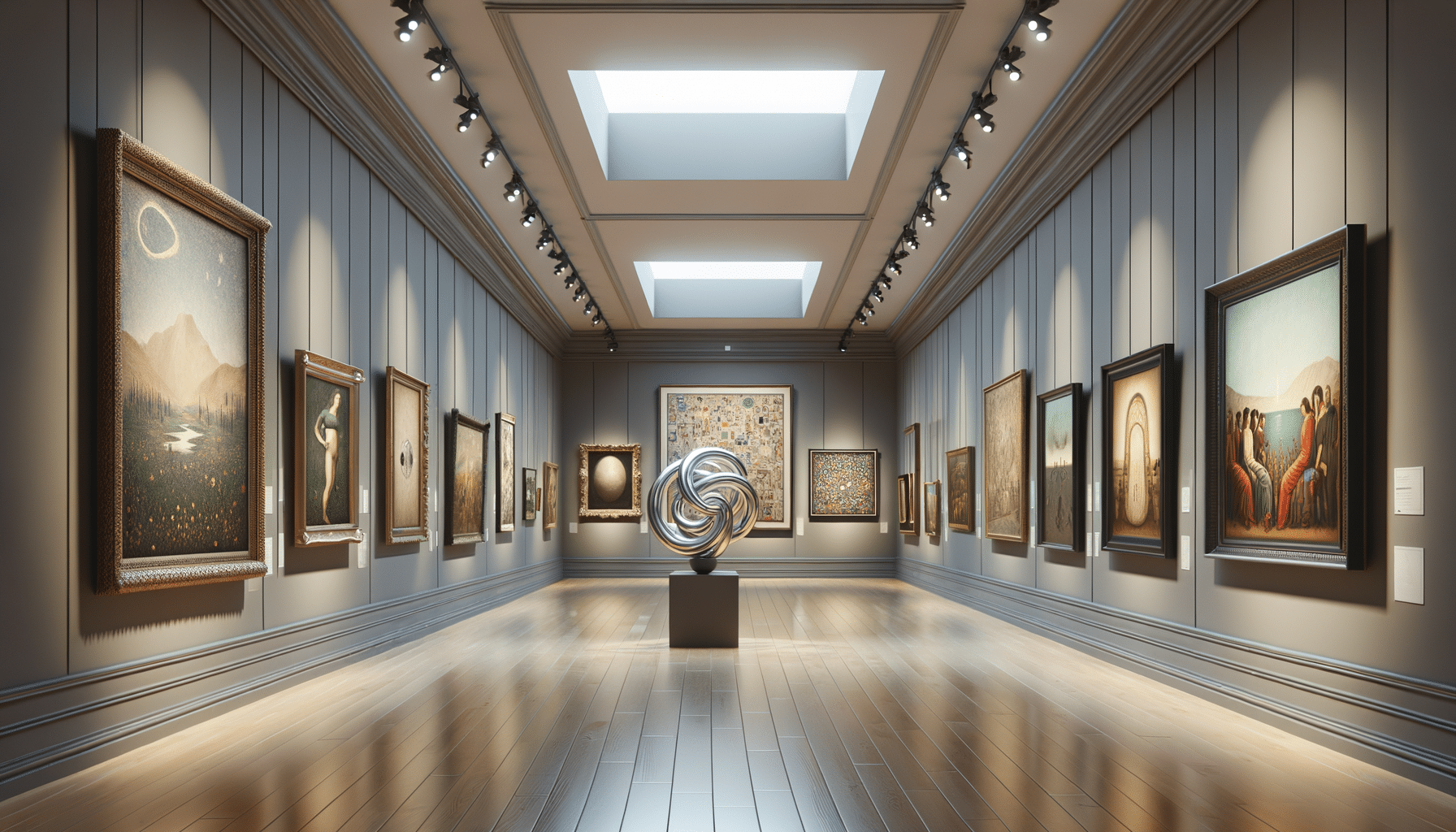
Make Your Home a Gallery: Elevate Your Space with Stunning & Affordable Art
Understanding the Art Market: A Beginner’s Guide
Diving into the world of art can be both exhilarating and overwhelming, especially for beginners. The art market is a dynamic and multifaceted space, where understanding its nuances can greatly enhance your buying experience. At its core, the art market is a confluence of creativity, culture, and commerce. It encompasses a wide range of artworks, from contemporary pieces to classic masterpieces, each with its own unique value and appeal.
For beginners, it’s crucial to start with research. Understanding the different types of art, such as paintings, sculptures, and digital art, helps in identifying personal preferences. Additionally, familiarizing oneself with various art movements and styles can provide context and enhance appreciation. Visiting galleries, attending art fairs, and exploring online platforms can also offer insights into current trends and popular artists.
The art market is not just about buying; it’s about investing in pieces that resonate with you. While some view art as a financial investment, for many, it’s about emotional connection and aesthetic pleasure. Art can transform spaces, evoke emotions, and even spark conversations. When purchasing art, consider factors like the artist’s reputation, the artwork’s provenance, and its condition. These elements can influence both the price and the long-term value of the piece.
In summary, the art market is a vibrant ecosystem that offers something for everyone. By understanding its intricacies, beginners can make informed decisions, ensuring that their art collection is both meaningful and valuable.
Finding Affordable Art: Tips and Tricks
Acquiring art doesn’t have to break the bank. There are numerous ways to find affordable yet high-quality pieces that can enhance your living space. One of the most effective strategies is to explore emerging artists. These artists often offer exceptional work at more accessible prices, as they are in the early stages of their careers. Supporting emerging talent not only benefits the artist but also adds unique and potentially valuable pieces to your collection.
Online platforms have revolutionized the art-buying process, providing a plethora of options for art enthusiasts. Websites dedicated to art sales often feature a wide array of pieces across different price ranges. These platforms allow buyers to filter searches based on budget, style, and medium, making it easier to find art that fits both personal taste and financial constraints.
Another tip is to attend local art fairs and exhibitions. These events often showcase a variety of artists, providing an opportunity to discover hidden gems. Moreover, purchasing directly from artists at these events can sometimes result in lower prices, as there are no gallery commissions involved.
Lastly, consider prints and reproductions. While original artworks have their own charm, high-quality prints can also bring beauty and sophistication to a space at a fraction of the cost. Many artists offer limited edition prints, which retain some exclusivity and potential for appreciation over time.
In conclusion, finding affordable art requires a bit of research and exploration, but the rewards are manifold. By utilizing these tips, art lovers can build a diverse and impactful collection without overspending.
The Role of Art in Home Décor
Art plays a pivotal role in home décor, serving as both a focal point and a means of personal expression. Integrating art into your living space can dramatically alter its ambiance, making it more inviting and reflective of your personality. Whether it’s a bold painting in the living room or a serene landscape in the bedroom, art has the power to transform ordinary spaces into extraordinary ones.
When choosing art for home décor, consider the overall theme and color scheme of the room. Art should complement the existing décor, enhancing its aesthetic appeal. For instance, a modern abstract piece might suit a contemporary setting, while a classic portrait could enhance a more traditional room. Additionally, the size and placement of the artwork are crucial. Large pieces can serve as a statement, drawing the eye and anchoring a space, while smaller works can be grouped to create a cohesive gallery wall.
Beyond aesthetics, art can also evoke emotions and set the mood within a room. Bright, vibrant colors can energize a space, while softer, muted tones can create a calming atmosphere. Art can also serve as a conversation starter, offering insights into the homeowner’s tastes and interests.
Ultimately, art in home décor is about creating a harmonious balance between beauty and functionality. It allows homeowners to showcase their individuality while enhancing the overall atmosphere of their living spaces. By thoughtfully selecting and placing art, one can create a home that is both stylish and personally meaningful.
Investing in Art: What You Need to Know
Art investment is a fascinating yet complex endeavor that requires careful consideration and strategic planning. While art can be a lucrative investment, it also carries risks, much like any other asset class. For those considering art as an investment, understanding the market dynamics and potential returns is crucial.
The art market is influenced by various factors, including economic conditions, cultural trends, and the reputation of artists. Investing in art requires a long-term perspective, as the value of artworks can fluctuate over time. Unlike stocks or bonds, art does not generate dividends or interest, making it a more speculative investment.
One of the key considerations in art investment is provenance, which refers to the history of ownership of a piece. Provenance can significantly impact an artwork’s value, with pieces having a well-documented history often fetching higher prices. Additionally, the condition of the artwork is paramount; any damage or restoration can affect its market value.
When investing in art, it’s essential to diversify the portfolio. This means acquiring pieces from different artists, styles, and periods to mitigate risks. Emerging artists can offer high growth potential, while established artists provide stability and recognition.
Lastly, consulting with art experts or advisors can provide valuable insights and guidance. These professionals can help navigate the complexities of the art market, ensuring that investments are both sound and rewarding.
In conclusion, art investment is a unique and rewarding venture that combines passion with financial acumen. By understanding the market and making informed decisions, investors can enjoy both aesthetic and financial benefits.
Preserving and Caring for Your Art Collection
Preserving and caring for an art collection is essential to maintaining its beauty and value over time. Artworks, like any other valuable items, require proper handling and storage to prevent damage and deterioration.
One of the first steps in art preservation is ensuring that the environment is suitable for the artwork. Factors such as temperature, humidity, and light exposure can significantly affect the condition of art pieces. Ideally, artworks should be kept in a stable environment with controlled temperature and humidity levels to prevent warping, fading, or cracking.
Light exposure is another critical factor. Direct sunlight can cause colors to fade and materials to degrade. To protect artworks, it’s advisable to use UV-filtering glass or acrylic when framing, and to position pieces away from direct sunlight.
Regular cleaning and maintenance are also important. Dust and dirt can accumulate on the surface of artworks, potentially causing damage over time. However, cleaning should be done with care, using appropriate materials and techniques to avoid scratching or staining the artwork.
For more valuable or delicate pieces, professional conservation services can be employed. Conservators are trained to handle and restore artworks, ensuring they remain in optimal condition.
In summary, preserving an art collection requires attention to detail and a proactive approach. By taking the necessary precautions, art collectors can ensure that their pieces remain beautiful and valuable for generations to come.

